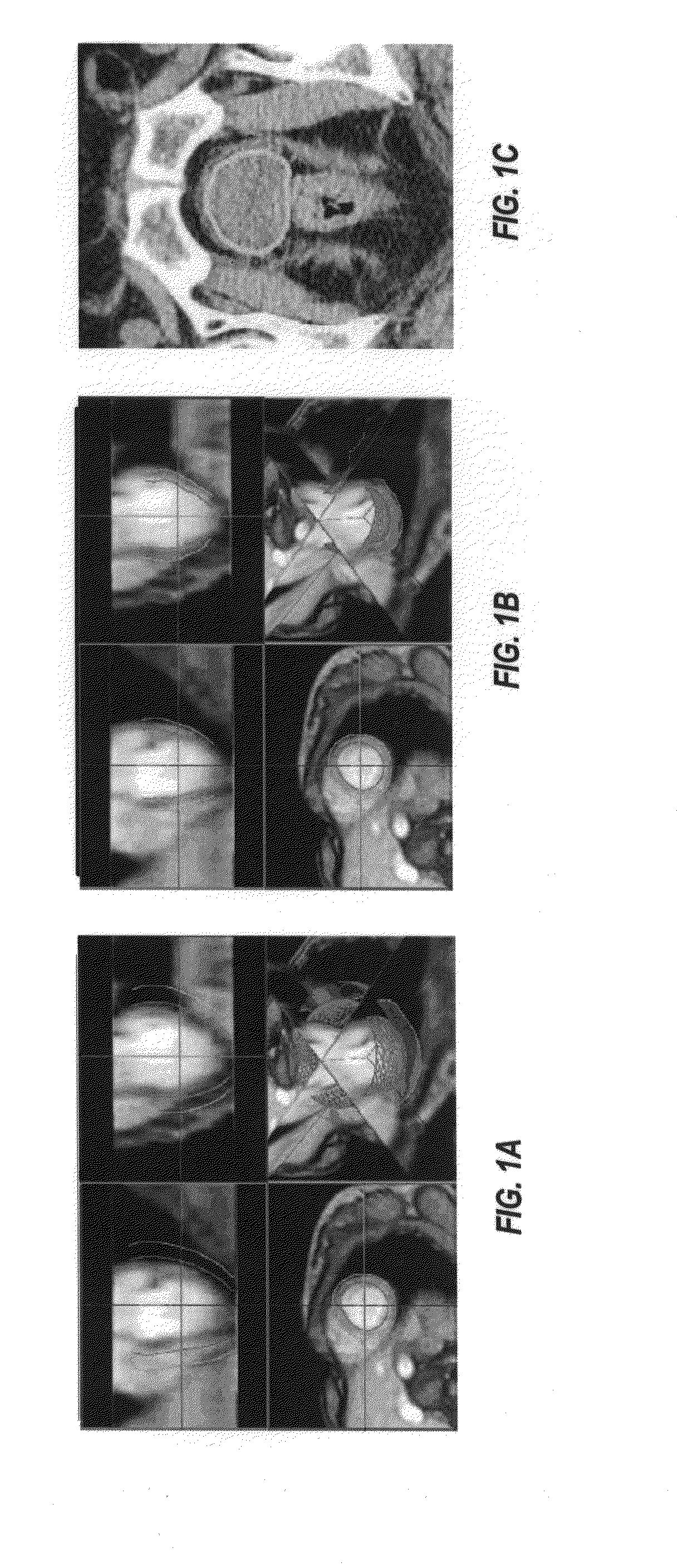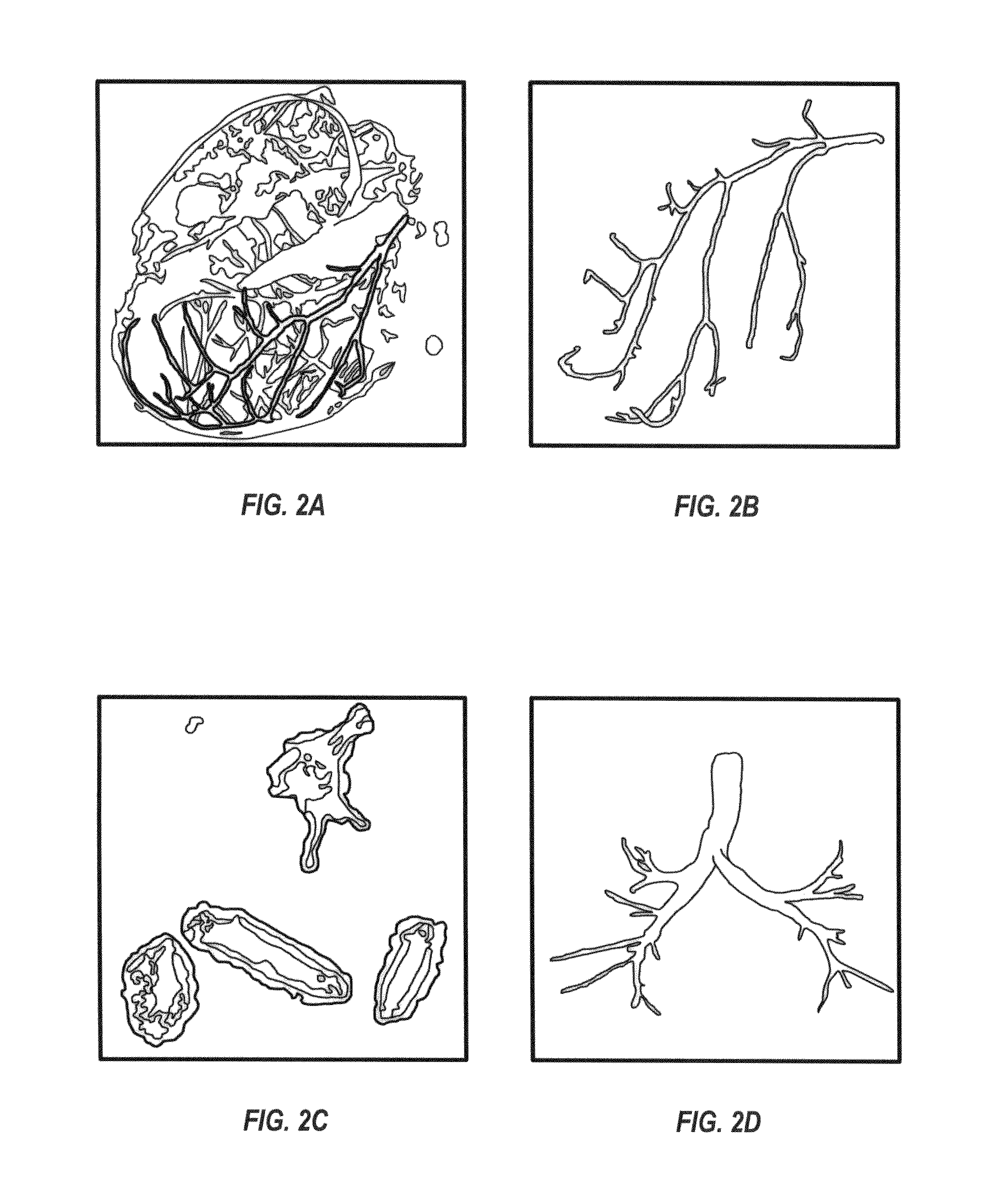System and methods for image segmentation in N-dimensional space
a technology of image segmentation and space, applied in the medical industry, can solve the problems of requiring excessive user interaction, limited usefulness of these tools, and difficult to achieve the effect of positiv
- Summary
- Abstract
- Description
- Claims
- Application Information
AI Technical Summary
Benefits of technology
Problems solved by technology
Method used
Image
Examples
example 1
1. Example 1
2-D
[0247]To reach an intuitive understanding of the underlying processes, a very simple 2-D example is presented corresponding to a tiny 2×4 image. The graph vertices correspond to image pixels with a cost associated with each vertex (FIG. 11(a)). The goal is to find the “minimum cost path” from left to right. The cost of the path is calculated as the sum of its vertex costs. The list of all paths in the graph includes (considering that the maximum allowed vertical distance between the two next-column vertices of the path is 1): ae, af, be, bf, bg, cf, cg, ch, dg and dh. The minimum-cost path can easily be identified as cg with the cost of 2.
[0248]In accordance with one embodiment of the present invention, the edges of the graph are preferably constructed as shown in FIG. 11(b). Cost transformation is performed by subtracting the cost of the vertex immediately below from the cost of the vertex under consideration (FIG. 11(c)). The costs of the bottommost two vertices are...
example 2
2. Example 2
3-D Surface Detection
[0251]Consider the task of detecting a terrain-like surface representing the boundary of a 3-D object in a volumetric image I(x,y,z) (briefly, I). Let X, Y, and Z be the image sizes in x, y, and z dimensions, respectively. I(x, y, z) is used to denote the voxel at the spatial position (x, y, z) in the image I. For each (x, y) pair with 0≦xa)), and it intersects with each (x, y)-column at one and only one voxel. Mathematically, the surface S is called an xy-monotone surface and can be defined by a function S: {0, 1, . . . , X−1}×{0, 1, . . . , Y−1}→{0, 1, . . . , Z−1}.
[0252]FIG. 12 depicts modeling of the optimal surface detection problem. The surface orientation is shown at FIG. 12(a). Three adjacent columns in the constructed graph are shown at FIG. 12(b), with smoothness parameters Δx=2 and Δy=1. A tubular object in a volumetric image is shown at FIG. 12(c). FIG. 12(d) shows the “unfolding” of the tubular object in (c) to form a new 3-D image. The ...
example 3
3. Example 3
Cylindrical / Tubular Surfaces
[0261]The principles from Example 2 are also applicable to detecting cylindrical / tubular surfaces, since such surfaces can always be invertibly “unfolded” to terrain-like surfaces using the cylindrical coordinate transform. Due to the circularity of a cylindrical surface, the edges of the corresponding graph should be connected in a circular manner to ensure the closure of the result. For instance, suppose an image is unfolded along the x-direction (see FIGS. 12(c) and (d)), then the smoothness constraint is also needed between the graph columns at (0, y, z) and (X−1, y, z),with yε{0, . . . , Y−1} and zε{0, . . . , Z−1}.
PUM
 Login to View More
Login to View More Abstract
Description
Claims
Application Information
 Login to View More
Login to View More - R&D
- Intellectual Property
- Life Sciences
- Materials
- Tech Scout
- Unparalleled Data Quality
- Higher Quality Content
- 60% Fewer Hallucinations
Browse by: Latest US Patents, China's latest patents, Technical Efficacy Thesaurus, Application Domain, Technology Topic, Popular Technical Reports.
© 2025 PatSnap. All rights reserved.Legal|Privacy policy|Modern Slavery Act Transparency Statement|Sitemap|About US| Contact US: help@patsnap.com



